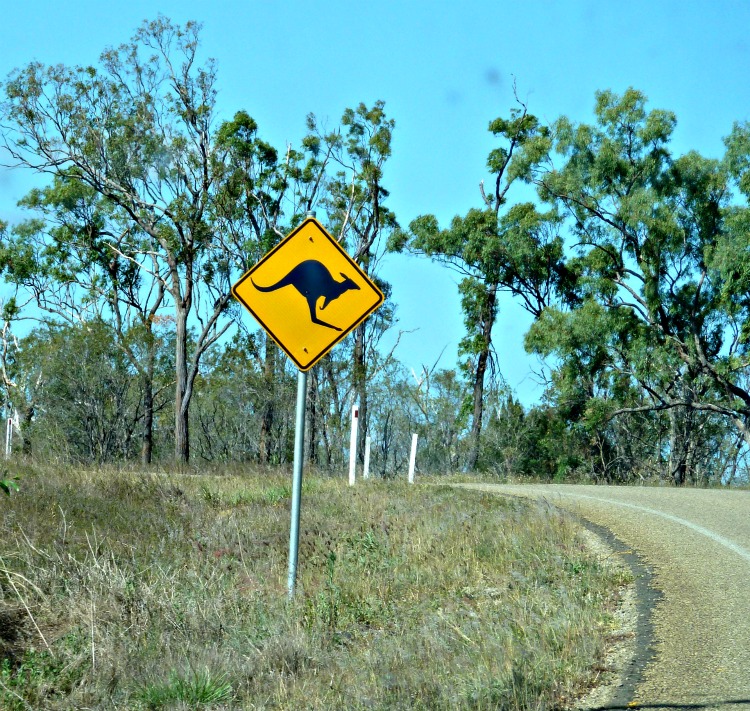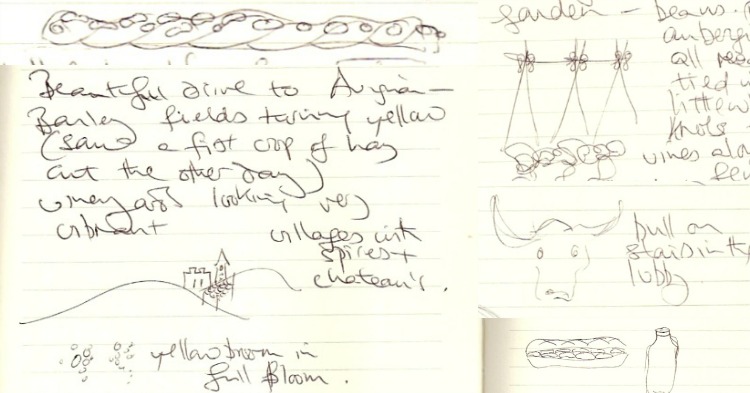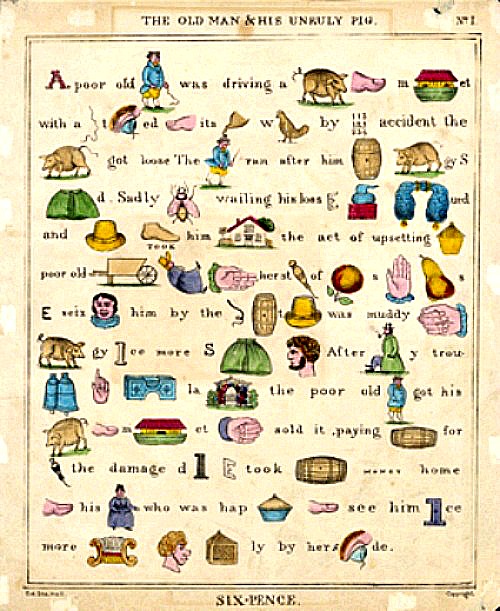Tell Your Story in Pictures
When introduced to story telling as a child we ‘read’ picture books not through the words on each page, but via the [gorgeous] illustrations that bring the story to life.
When we enter primary school we naturally express ourselves and share ideas (however silly) through drawings –
But once we hit High School, we’re increasingly ‘taught’ to express our thoughts and knowledge in words and essays.
By our teens our expressive world becomes predominantly linguistic orientated.
Drawing and craft are bundled up and put in a basket (on the top shelf) for cultural expression.
To be executed by the ‘artists’ among us.
Only for those who [seemingly] possess ‘artistic talent’.
Yet, it’s never said that writing is only for authors.
Only those who have the skill to write effectively, succinctly, expressively.
It’s accepted that words are the means of communication – no matter what your capability.
It doesn’t matter if you ‘can’t write’ (the way people say they ‘can’t draw’)
It’s totally immaterial if your use of words is clunky, poorly composed, badly executed and out of proportion.
Which is why nobody would ever think of looking over your shoulder when you’re sitting in a cafe writing – Writing is the accepted norm for expression – Everyone does it.
Not so when you take out a note book and start sketching – Everyone is fascinated – as you must be one of the chosen ones who’s an artist even if your drawings are clunky, poorly composed, badly executed and out of proportion.
People peer at your work and butt in to say
- “How’s it going?”
- “Oh you’re doing great there” (even if you know you’re not!)
Try and sketch in an open space and it seems you’re open to everyone’s opinion –
I’ve yet to be interrupted when writing in a journal in a public space – let alone incur glances to observe more closely what I’m composing, or be told:
- “Good job”
Which makes it kind of daunting for a newbie – for someone who the last time they scribbled a drawing was in kindergarten, and wants to illustrate their life, but by default senses they may be prone to the embarrassment of exposing their inadequate attempts.
Sadly, to avoid this risk – the potential depiction of doodles or portraying of pictures is cast asunder – and we deny ourselves this innate means of expression.
By nature we’re all far more visual
than we give ourselves credit for.
Tell Your Story in Symbols
Symbols are an International language
We read symbols everyday – often without realizing it.
Even people who swear they aren’t visual are unwittingly reading non verbal signs everyday as they go about their business.
Symbols are a shorthand that are instantly recognizable –
Travelling to a new place we know the first stop to look out for is the ‘i’ for Information.
 And then tired from the day’s driving, eyes are peeled for the camping sign.
And then tired from the day’s driving, eyes are peeled for the camping sign.

You don’t need words for these.
Symbols are a mandatory part of everyone’s daily life –
So I’m thinking, while full blown sketching may feel outside of our realms (for the moment) – Starting off by inserting little symbols or cartoons into our travel journals can make our writing so much more entertaining to read back.
I don’t think anyone could say they can’t draw a stick figure so the above cartoon type stick figures are perfect inspiration for inserting into our very own epic tales.
Tell Your Story in Doodles
I’ve found simple doodles help to convey and add to the story I’ve written.
And the joy of incorporating these little squiggles, to your travel journal, is they’re not attention seeking 😉
They’re inconspicuous enough not to attract pokey noses in to see what you’re up to…
Your doodle drawings can remain private,
yet are expressive enough to add atmosphere to the telling of your story when in years to come you return to read your tale.
The life of a story is in the detail.
Tell Your Story “not by words but by things”
Have you ever deciphered a rebus?
The term ‘rebus‘comes from the Latin: Non verbis, sed rebus, which translates “not by words but by things”
The Old Man & His Unruly Pig (illustrated below) is a nineteenth century rebus –
While I’d never suggest you convert every word into a picture (as in this tale) it shows what level you could take your travel journal writing to, if so inclined!
How did you go unraveling that tale?
For those wanting a little assistance… Here’s my interpretation!
A poor old [man] was driving a [pig] [to’e’] m[ark]et with a [string] t[eye]ed [to’e’] its [leg] w[hen] by [sum] accident the [pig] got loose. The [man] ran after him [butt] {pig]gy s[cape]d. Sadly [bee] wailing his loss e [p][suet]ude and [it] [over took] him [Inn] the act of upsetting [hay] poor old [barrow] [woman] [hand] her st[all] of [apple]s [hand] [pear]s. E seiz[ed] him by the [rope] [butt] [it] was muddy [hand] [pig]gy [one]ce more s[cape] him. After [man]y trou[bells] [hand] [heavy] la[arbor] the poor old [man] got his [pig] [toe] m[ark]et [hand] sold it paying [butt] for [all] the damage d[one] E took [butt] money home [toe] his [wife] who was hap[pie] [toe] see him [one]ce more [seated] [home]ly by her s[eye]de
Storytelling is Communication
We receive information via images (advertising billboards and marketing messages) all day everyday –
So while we take millions of messages in visually we predominately communicate back out our personal thoughts and feelings verbally.
I think its time we
complement our words with imagery
to tell our story
We live in a world of symbols so why not use the shorthand of symbols and make travel memories a fuller experience when we return to read our pages of ramblings in years to come.
Do you doodle in your travel journal at all?










Ooh I didn’t know that was called a Rebus! My daughter is just learning to read and she has these in her activity books 🙂 I sometimes doodle in my travel journal, usually when the words won’t flow. I think I need to do it more often!
Little did you realize your daughter was reading a Non verbis, sed rebus!
I’d love to see everyone incorporating a few squiggly doodles in among their written words – Its just not what we’re taught to do, so I sense there’s a resistance to try 🙂
I really like this idea! Thanks for reminding me about doodling! I went to a conference that had a class on storytelling and this is exactly what the author did and I loved it. Here is a quick post I wrote about her storytelling methods.
Cacinda Maloney recently posted..Shoo Fly! Shoo Fly! Chuflay! Shoo! A Lovely Restaurant in Portofino, Italy
Thanks so much Cacinda for sharing the post about Mary’s methods of storytelling –
Always happy to share ways and means of recording our travels simply and painlessly!
I never thought of some of these as storytelling, thanks for broadening my mind!
Storytelling can be made through theatre, dance, art and craft – Not only words!
I feel our skills for storytelling are blinkered by High School for the ease of teachers who want to be able to like oranges with oranges when it comes to marking –
I’d like to see students be given the option of how they present their assignments – So the life of Henry the VIII could be presented in a kinesthetic (dance or sculpture), visual (arts) or aural (words written or a speech) method – not only by today’s mandatory system via a wordy essay. 😉
My father was an artist and we he drew in public, there were definitely oohs and ahs from passersby. My younger sister inherited the “art” gene. I was encouraged to concentrate on music for creative expression. My father was an exchange teacher in England and art was one of my electives with his boss as my teacher. I believe his comment on my artistic expression was, “Suzanne’s work is sooner careful than creative”. Ouch. So, I don’t draw from nature, but I am a committed doodler — always during lectures, and sometimes for no reason at all.
I bet your English teacher never criticized your creative ability –
More likely simply correct your grammar giving you the tools to improve your writing skills –
Now I wonder what the outcome would have been if the art teacher had guided you with perhaps tools to better create perspective?
I’m sure your doodles are super creative and more importantly expressive.
Now that I’m retired, I’m eagerly adding things to my list of things to try. I would love to expand on this creative outlet. My grandkids and I do crafts together and call this Camp Grandma. Thanks for giving me some new ideas.
Sounds wonderful Neva, educating the young that writing isn’t the only means of expressing thoughts once they get to High School –
As Pablo Picasso said:
“Every child is an artist. The problem is how to remain an artist once he grows up.”
I loved sending letters to family with doodle drawings instead of words every third or forth space or where it was appropriate.
It’s so fun???. This was before the technology age came along. I encourage everyone to draw and stylize their print or handwriting! Cheers to being creative ??????????
Creative and so much more expressive 🙂